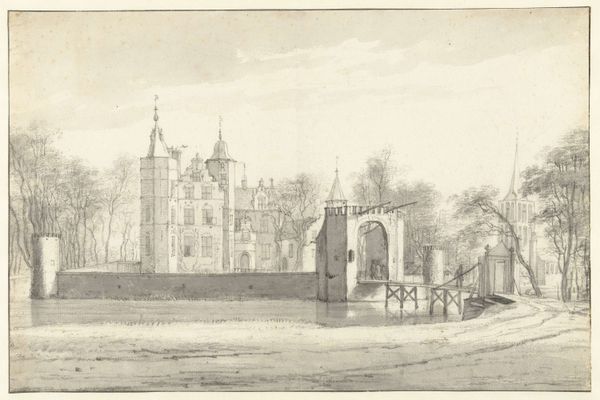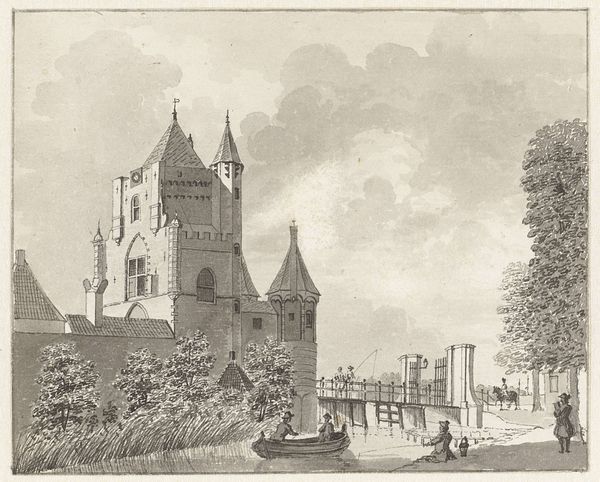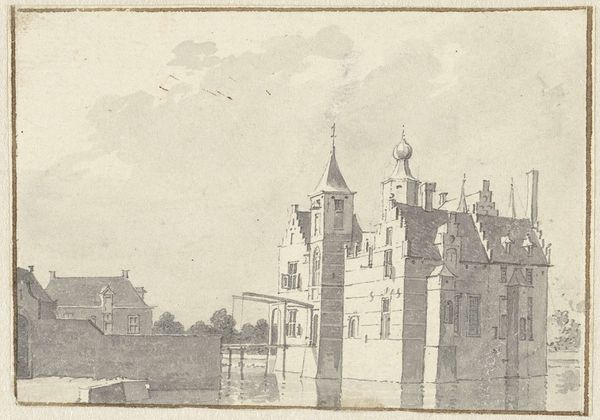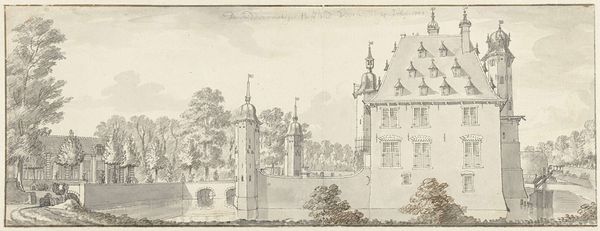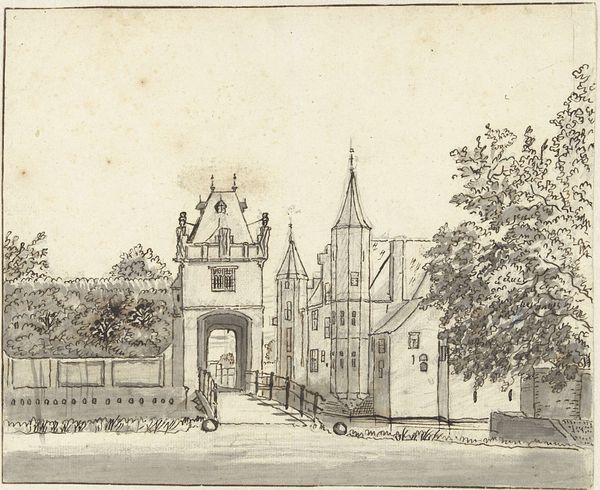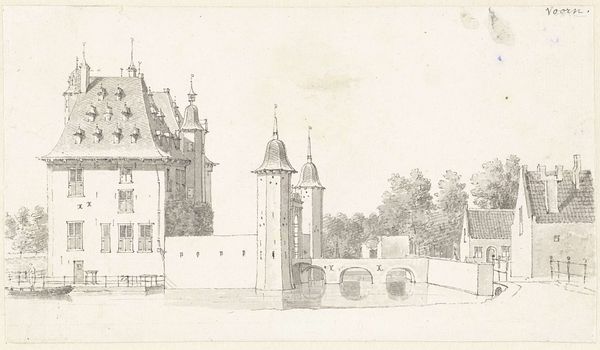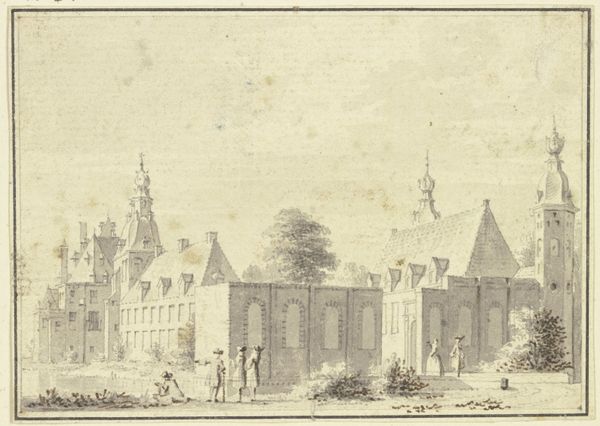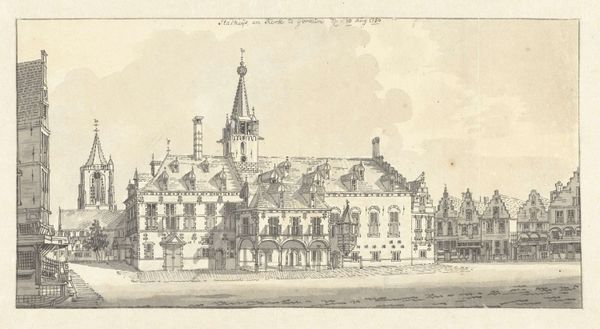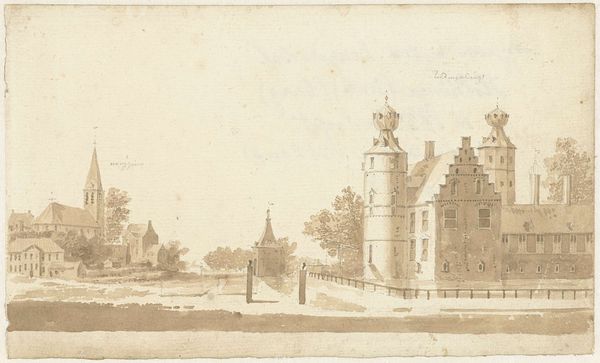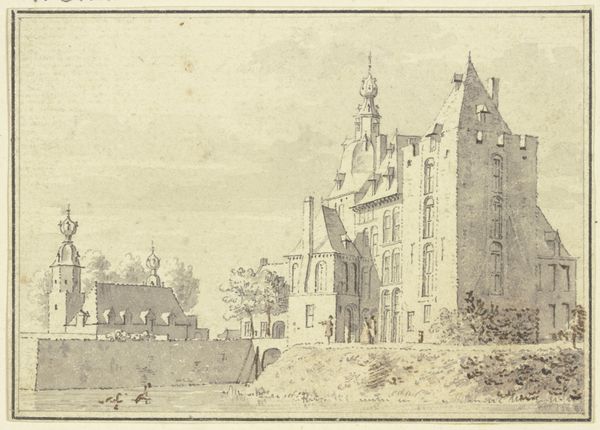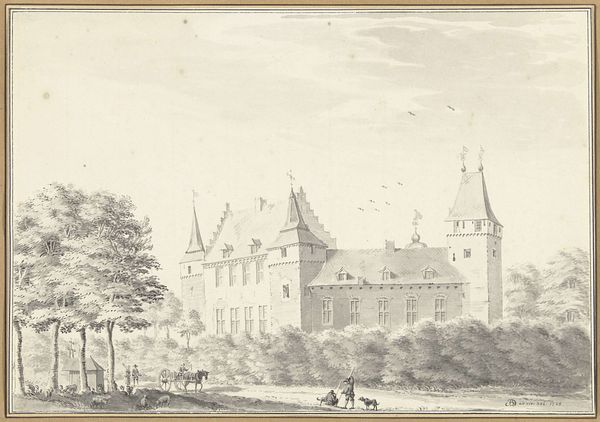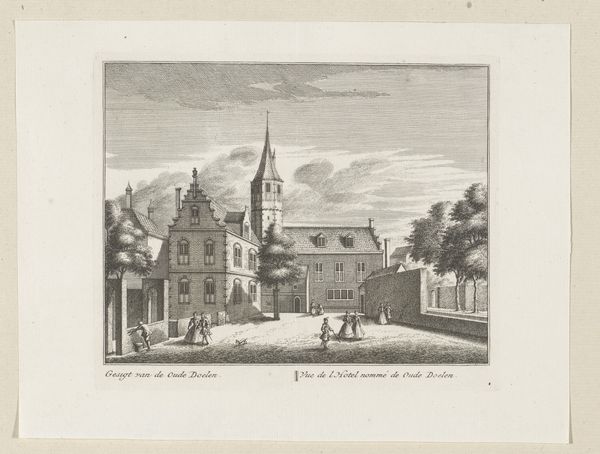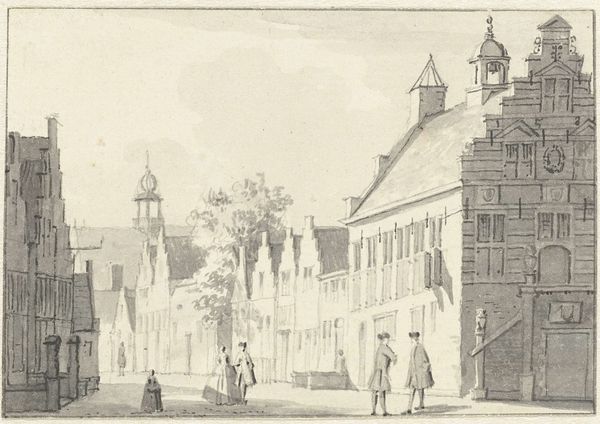
drawing, paper, ink
#
drawing
#
baroque
#
dutch-golden-age
#
old engraving style
#
landscape
#
perspective
#
paper
#
ink
#
cityscape
#
history-painting
Dimensions: height 225 mm, width 335 mm
Copyright: Rijks Museum: Open Domain
Curator: Here we have Abraham de Haen the Younger's "View of Swieten Castle," created sometime between 1717 and 1748. It's currently housed here at the Rijksmuseum. What's your immediate impression? Editor: It's...distant. Cold, even. Like looking at a perfectly preserved memory that isn't mine. There's such precision in the line work. The artist wants you to feel the weight of history, the austerity of power. It almost feels... manufactured. Curator: De Haen’s masterful handling of ink and paper produces an almost photographic level of detail. Notice how the architectural lines converge, creating depth and emphasizing the castle's imposing presence, dominating not just the landscape, but the entire composition. The artist’s baroque influence can be seen through his meticulous construction. Editor: Precisely. And it's a manufactured experience because there are real people—the miniature figures in the right corner—in that scene and there is virtually no life in this tableau, in the landscape itself, except its manicured submission to aristocratic architecture. It feels deeply...symbolic of control, almost to a sinister degree. Curator: It’s interesting you note the possible undercurrent. I am drawn more towards the geometry. Note how the structure’s reflection ripples within the water, subtly disrupting its firm, steadfast image. It adds a layer of complexity, suggesting an ever present vulnerability despite its strength and grand facade. Editor: Right, the illusion of the steadfast, in a sense—so beautifully, deceptively wrought. I keep being drawn back to those people; look how deliberately the figures seem posed—placed like little chess pieces, rather than inhabiting that space. I find it so subtly, deeply unsettling. Curator: Your observations resonate, especially when considering how historical painting, cityscapes, and landscapes were emerging themes. But what stays with me is De Haen’s impressive utilization of perspective. How it truly captures an era defined by rigid structures, both physical and societal. Editor: So while my imagination runs away to shadowy intrigue, I find solace and beauty in your precise observation about the artwork’s ability to articulate the complex structures of history—its intentions, and its tensions. Curator: And I am grateful for your sensitivity in highlighting the tensions held and captured within an intended harmony.
Comments
No comments
Be the first to comment and join the conversation on the ultimate creative platform.
